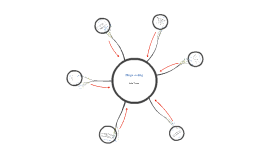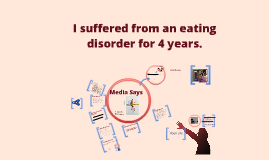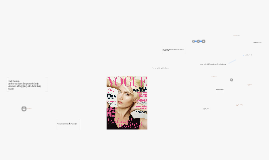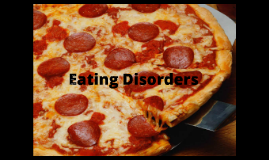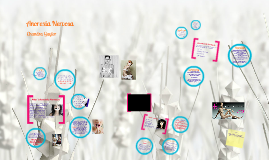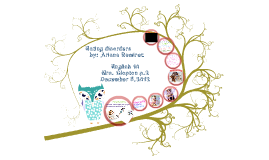eating disorders
Transcript: Students completed a survey which included 6 questionnaires that were administered consecutively. They were a demographic questionnaire, a mass media exposure measurement questionnaire, television viewing frequency, disordered eating patterns questionnaire, social comparison by physical appearance, and Internalization of Thin Ideal measured by Sociocultural Attitudes towards Appearance. even the boys. Your appearance defines your value. Eating Disorders 2nd semester 9th grade Works Cited María V. Carrera, et al. "The Mass Media Exposure And Disordered Eating Behaviours In Spanish Secondary Students." European Eating Disorders Review 18.5 (2010): 417-427. Academic Search Premier. Web. 9 May 2012. Authors found that viewing ultra-thin or average-size models led to decreases in both body satisfaction and self-esteem in adolescent girls aged 11–16, with changes in self-esteem fully mediated by changes in body satisfaction. The images of slim young women had a negative impact, Given that, for adolescent girls, only overweight models showed to prevent negative impact. picture of me Students with a higher total frequency of media exposure during the week were more susceptable to having a low self esteem and developing an eating disorder. works cited The Media Is a Powerful Messenger YOUR LIFE. I suffered from an eating disorder for 4 years. Thin is in! The results suggest that, in the short term, this widely available video prevents girls from making damaging social comparisons with media models. Although this study only examined short-term effects, the findings add to the growing evidence that media literacy interventions may be useful tools in protecting young girls from body dissatisfaction. BULIMIA NERVOSA is characterized by a secretivecycle of binge eating followed by purging. Bulimia includes eating large amounts of food in short periods of time and then purging through vomiting, laxative abuse or excessive amounts of exercise. ANOREXIA NERVOSA is characterized by self-starvation and excessive weight loss. BINGE EATING DISORDER (also known as COMPULSIVE OVEREATING) is characterized primarily by periods of uncontrolled, impulsive, or continuous eating beyond the point of feeling comfortably full. The sample consisted of 136 female adolescents aged 11–16. Research was conducted in a single-sex state school in London, located in a primarily middle-class neighborhood. Participants were then shown two magazine covers, each for 15 seconds, which differed depending on exposure condition, depicting either ultra-thin models, average-size models or no models. After viewing both covers, participants rated their reactions to them and, in the two experimental conditions, they also rated their reactions to the models. http://www.media-awareness.ca/english/index.cfm video 2 Body Image & Eating Disorders The aim of this study was to investigate the association between disordered eating behaviours/attitudes and mass media exposure in a cross-sectional national survey of 1165 Spanish secondary students (age between 14 and 16 years Eating Disorders http://www.youtube.com/watch?v=Hv5Z2Xv8iJU&feature=fvwrel ( Cause and Effect Mass Media) http://www.youtube.com/watch?v=v4z14maZrlY (media and body image) results video 1 (true life, tegans story) 2nd Study Summary I started when i went on vacation for 2 weeks with my aunt in Seattle Washington. I weighed 110 pounds before I had left, when i came back i was 15 pounds heavier. Within 3 weeks I weighed 89 pounds. The last time I was that thin was in the seventh grade. The Media doesn't have the right to control Halliwell, Emma, Alice Easun, and Diana Harcourt. "Body Dissatisfaction: Can A Short Media Literacy Message Reduce Negative Media Exposure Effects Amongst Adolescent Girls?." British Journal Of Health Psychology 16.2 (2011): 396-403. Academic Search Premier. Web. 9 May 2012. by Yahaira Garcia per.3 Human Development Participants were 127 British girls aged between 10 and 13 recruited from two secondary schools. Girls were assigned to one of four experimental conditions. An intervention video was shown to half of the girls immediately before they viewed ultra-thin models or control images. The video was developed by Dove’s Self-Esteem Fund and has the benefits of being professionally produced. First Study Summary cont.. This experimental study examined whether a brief video intervention identifying the artificial nature of media images could protect adolescent girls from negative media exposure effects and body dissatisfaction. what they found.. MEDIA Works Cited Takagishi, Yukihiro, Masatsugu Sakata, and Toshinori Kitamura. "Effects Of Self-Esteem On State And Trait Components Of Interpersonal Dependency And Depression In The Workplace." Journal Of Clinical Psychology 67.9 (2011): 918-926. Academic Search Premier. Web. 9 May 2012. Can a short media literacy message reduce negative media exposure effects amongst adolescent girls? Why I chose the effects Mass Media has on Body






